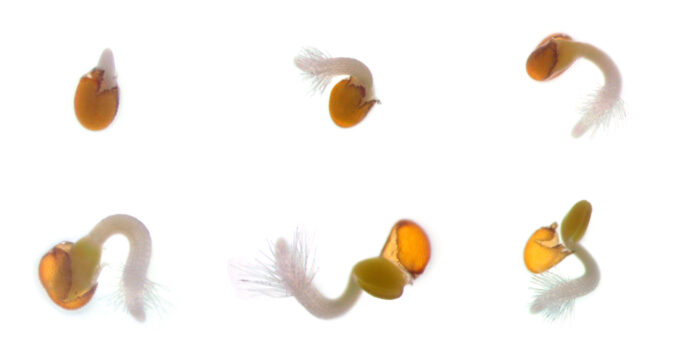Genetic variation across climates affects seed germination
Seeds may appear lifeless as they lay dormant in the soil, but inside each little capsule is a complex biochemical machine waiting for the right time to spring to life. A new study led by UC Davis researchers investigated how climate conditions may play a major role in regulating the timing of plant life cycles.
The most critical first step in a plant’s life is germination is the process of a plant sprouting from a seed. For a baby seed, timing is everything. To maximize their chances of survival, seeds should germinate only when the environmental conditions are just right.
“If they germinate when there is too little water around, or under the snow, or when there are too many competitors, the plant won’t be able to survive,” said Daniel Runcie, an assistant professor in the department of plant sciences, via email.
Germination depends on a number of factors, including internal genetic instructions. Variations in the delay of germination 1 gene, or DOG1, were previously known to regulate seed dormancy. Researchers hypothesized that DOG1 may also be responsible for seed responses to cold temperatures.
This study used a traditional model organism called Arabidopsis thaliana, which is a weedy, fast-growing plant in the mustard family also known as the thale cress. Although it is native to Europe and Asia, it has been introduced around the globe and grows in many different climates. It is also an annual plant, meaning its entire life cycle is contained within a single growing season. These plant characteristics — fast growth, a short life cycle and the ability to adapt to many climates — make its seeds the ideal model for this study.
“The germination characteristics of seeds vary in different parts of the world because they have been selected by different climates, so we used Arabidopsis thaliana seeds from across its native Eurasian range to investigate different germination responses,” said Alejandra Martínez-Berdeja, the study’s lead author and UC Davis postdoctoral scholar in the department of evolution and ecology.
Arabidopsis seeds were collected from different locations across Eurasia that represented a variety of local climates. The researchers brought seeds from over 500 distinct lineages back to the lab and subjected them to 13 different cold treatments. Exposing the seeds to different temperatures shows which environment each plant is best suited for.
“Cold treatments simulated different seasonal cold conditions including fall and spring experienced by seeds,” Martínez-Berdeja said.
The Arabidopsis seeds were removed from cold chambers and allowed to germinate, with a very diverse range of results. Germination varied along a gradient of climates, indicating that seeds are able to detect and respond to environmental cues like temperature.
In seeds from warmer climates in Western Europe, cold temperatures cause the seeds to stay dormant to outlast the winter and germinate when temperatures become favorable in spring, so the plant won’t freeze to death before it reproduces. In other plant lineages from colder climates like Scandinavia, cold temperatures actually induce germination so that plants will grow in winter when it is most advantageous in that area.
“That was the cool result of the study,” said Johanna Schmitt, a distinguished professor in the department of evolution and ecology, via email. “In some genetic lines, prolonged chilling induced secondary dormancy, but in other lines brief chilling actually induced germination [without] secondary dormancy. These strategies were associated with climate.”
Researchers found variations in the DOG1 gene that correlate with plants found in significantly different climates. Aside from its previously known role in controlling seed dormancy, these results now link alleles of DOG1 to certain climates.
“I think the most exciting result is finding that DOG1 — a gene that is already well-known to affect dormancy — really affects dormancy in multiple ways depending on what environment it ends up in,” Runcie said. “The effects of different alleles at the DOG1 gene depend on the environment.”
With the discovery of the underlying genetic instructions for seed responses to climate comes further research questions. Although Arabidopsis thaliana is a simple model plant, farms that grow its relatives in the mustard family may also benefit from the results of this research.
“Arabidopsis thaliana is related to important crops such as mustard, cauliflower, broccoli and canola, so research findings can help understand the germination responses of other plants, including domesticated plants and other wild species,” Martínez-Berdeja said.
Understanding the mechanisms that influence germination times allows crop breeders and farmers to grow and harvest crops more efficiently. Maximizing germination rates not only helps farmers grow more plants with the same seed input, but also treating seeds before sowing helps the crops germinate at the same time and mature together as well.
“Germination — and particularly cold effects on germination — is very important in crops, as farmers need all plants to germinate at the same time,” Runcie said. “Better understanding the genes that control when seeds [choose] to [remain] dormant, and are thus more difficult to get to germinate, could help breeders develop varieties that germinate more consistently.”
Written by: Lauren Glevanik — science@theaggie.org





